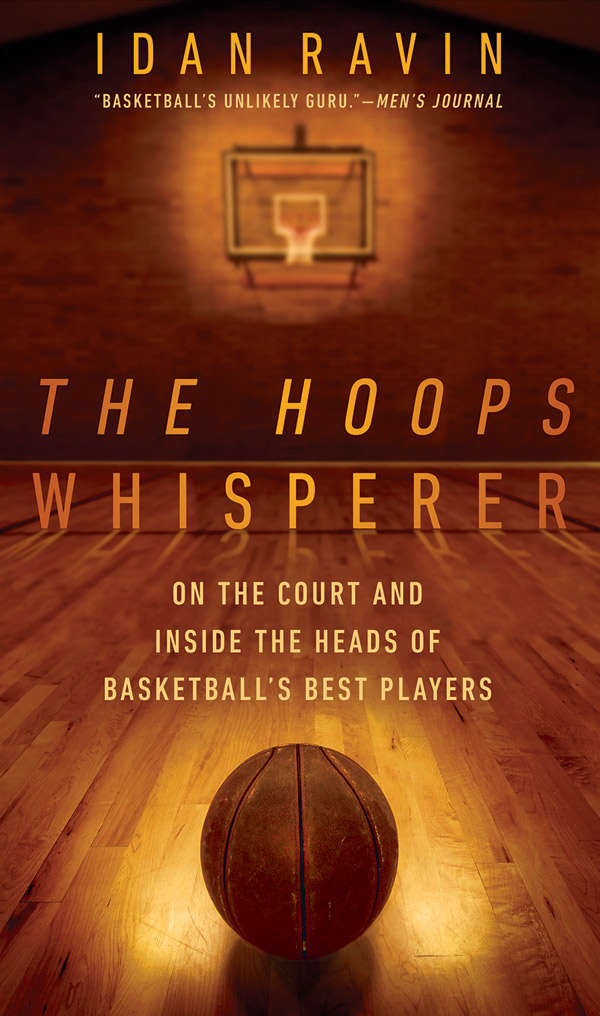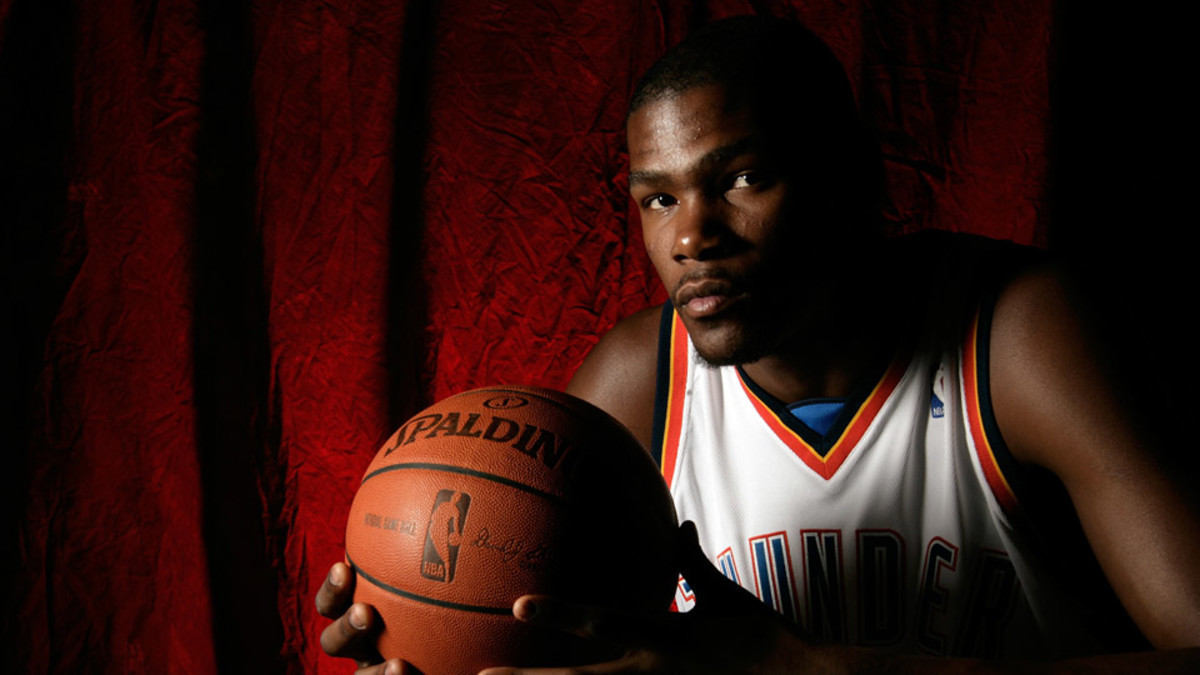The Legend of Kevin Durant
Editor's Note: The following passage is from Idan Ravin's latest book 'The Hoops Whisperer: On the Court and Inside the Heads of Basketball’s Best Players,' set to be released on May 5th by Gotham Books, a member of Penguin Group (USA) LLC, A Penguin Random House Company. Copyright © Idan Ravin, 2014.
I’d heard him described as one of a kind, but people in the league say that about a lot of guys who turn out to be products of hope rather than divine inspiration. I had to see for myself, so I invited Kevin to a pre-draft workout in June 2009 with Stephen Curry, Wes Matthews, and Sam Young, all three of whom made the league and are still in it. Kevin had just finished his second NBA season and was the youngest of the four.
“Workouts start at seven on Saturday morning. Come alone,” I said.
I arrived fifteen minutes early to make sure someone had unlocked the doors leading to the gym. I saw a parked car in the lot, and I figured it belonged to a custodian. When I got closer, I recognized Kevin’s profile. He had the seat reclined and was listening to music. I gently tapped on the passenger window to not alarm him.
“You never get a second chance to make a first impression,” he later told a Sports Illustrated reporter about our first session.
Stephen, Wes, and Sam arrived after seven. Everyone greeted each other as if they already knew one another—a consequence of fame and the collective brotherhood of elite basketball players. We made small talk as we laced up our shoes. I didn’t let on that I still felt surprised a budding NBA star would carve time out of his weekend morning just weeks after his season ended to train alongside players who were junior in experience and ability. We began with just a short warm-up, which I prefer because players don’t get to spend ten minutes shooting on the sideline before they check in to a game. We quickly progressed to multiple sets of full-court sprints that finished with jump shots from both corners and wings and the top of the key. As they fatigued, I intensified the drill: Now they would finish their full-court sprints with one-and two-dribble jump shots from the same spots on the court.
'Kevin possessed extraordinary physical gifts and a deep reverence for the game. He was also modest, and hadn’t yet made an All-Star team...'
Early in Kevin’s professional career, some critics thought he’d have trouble with the physical play in the NBA because he couldn’t bench-press 185 pounds at the NBA Pre-Draft Camp. This proved about as accurate as forecasting a snowstorm for Honolulu. That morning I witnessed him release the ball effortlessly from what seemed like a nearby football field; control the ball with his massive hands yet with the dexterity of a potter; sprint the length of the court without his heels touching the ground; maneuver his feet during two-ball dribbling drills with the agility of a defensive back; and quickly master any drill I threw his way. The game came so easy to him that I worried Stephen, Wes, and Sam might feel discouraged, because Kevin’s obvious gifts could exaggerate the distance between them and the NBA’s elite. But then I heard him praise the three of them, which left me wondering if he could read minds too.
Kevin possessed extraordinary physical gifts and a deep reverence for the game. He was also modest, and hadn’t yet made an All-Star team, but one morning in a gym showed me that he had scoring titles and all-NBA recognition in his future—and a shot at being one of the greatest ever.
Two years later, I found myself sitting on the floor of a gym in LA with Kevin, Los Angeles Clippers star Blake Griffin, and JR Smith, then with the Denver Nuggets. The three guys were exhausted from ninety minutes of intense effort. Only hours earlier, Kevin was home in Washington, DC, reading a message I’d sent from my BlackBerry: “I’m in LA with Blake. Let’s get some work in.”
He’d grabbed a backpack, flown cross-country on a moment’s notice, and now here we were.
The session included sprinting to different spots on the court, catching the ball at different angles, rotating their feet and shoulders in different directions, and finishing near the basket with different shot selections. I don’t waste time having guys just stand and shoot; they don’t play ball standing still, so we don’t train that way either. I capped off their session with games of one-on-one, played with their backs to the basket, from the low block, wing and elbow, and with dribble and time parameters.

In The Hoops Whisperer, Idan Ravin chronicles his experiences working with the NBA's top athletes. From Carmelo Anthony to Dwight Howard, Ravin has helped some of the league's greatest players take their game to the next level.
Gotham Books
I took many factors into consideration before putting Kevin, Blake, and JR together as workout partners, like I do with any such group. Talent, personality, station in life, size, goals, commitment, strengths, weaknesses, friendship, circle of friends—it all weighs in. For instance, Chris Paul can work with Melo or LeBron because they’re close friends, partly because they share a rarefied status in the world of pop culture; there are very few people who live the kind of life they do. On that level, it’s like Brad Pitt marrying Angelina Jolie, or Jay Z and Beyoncé—the superfamous stay among their own. Of course, Chris and Melo and LeBron also have enormous respect and admiration for one another, and are motivated to become not merely great but the greatest ever to play.
'It’s possible to change a player’s behavior and patterns of movement over time through careful, repeated instruction...'
Blake has the body of a superhero, and I wanted Kevin to have to work against Blake’s herculean strength. The best way for him to confront any possible self-doubt about his lack of muscle would be to socialize Kevin to contact, especially with his back to the basket. I hoped Blake would pound Kevin mercilessly, and that Kevin would combat it with finesse and technique and by retaliating with his own aggressive play. For instance, Kevin would have to adjust the position where he holds the ball while he rotates to attack the basket in order to avoid Blake’s quick swipe with his hands. Meanwhile, Blake recognizes that he fades back on his own shot and relies on power around the basket to compensate for a low release point. He’s 6‑10 with long arms, but sometimes his hands are down near his face when he shoots, which makes him a lot smaller. I wanted him to lengthen everything and utilize all of his athleticism and his length. It’s okay to fade back, but if you fade back small—shooting with your hands too low—you’ve minimized the physical gifts that make you special. Kevin’s own wingspan is insane, so no matter how much Blake fades back, he can’t fade back enough that Kevin can’t touch the ball unless Blake extends his arms. I wanted Kevin’s length to force Blake to consciously lift the release on his shot and his jump hook.
It’s possible to change a player’s behavior and patterns of movement over time through careful, repeated instruction—but it can happen faster by putting him in an environment that magnifies his weaknesses and forces him to adapt. These are smart, off-the-charts competitive guys, and when they have to, they’ll find a way to become comfortable with the uncomfortable.
To purchase a copy of The Hoops Whisperer, go here.





